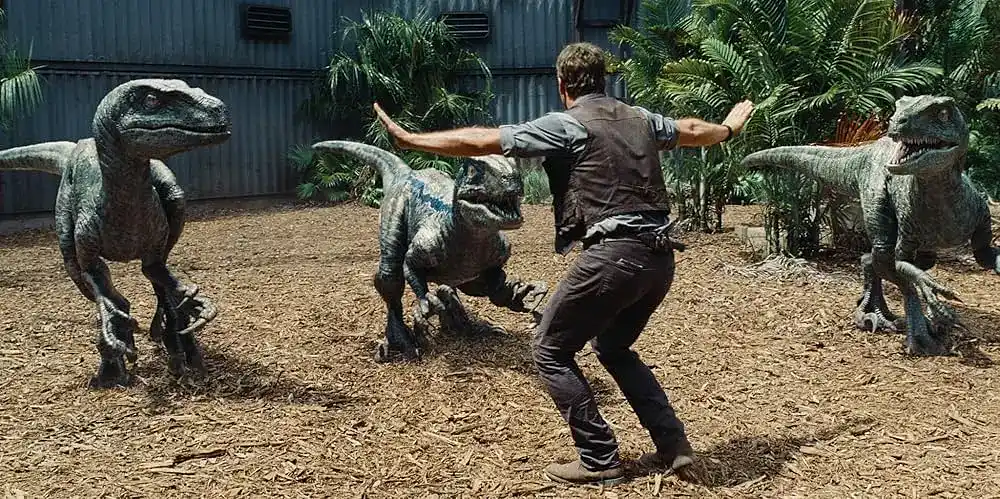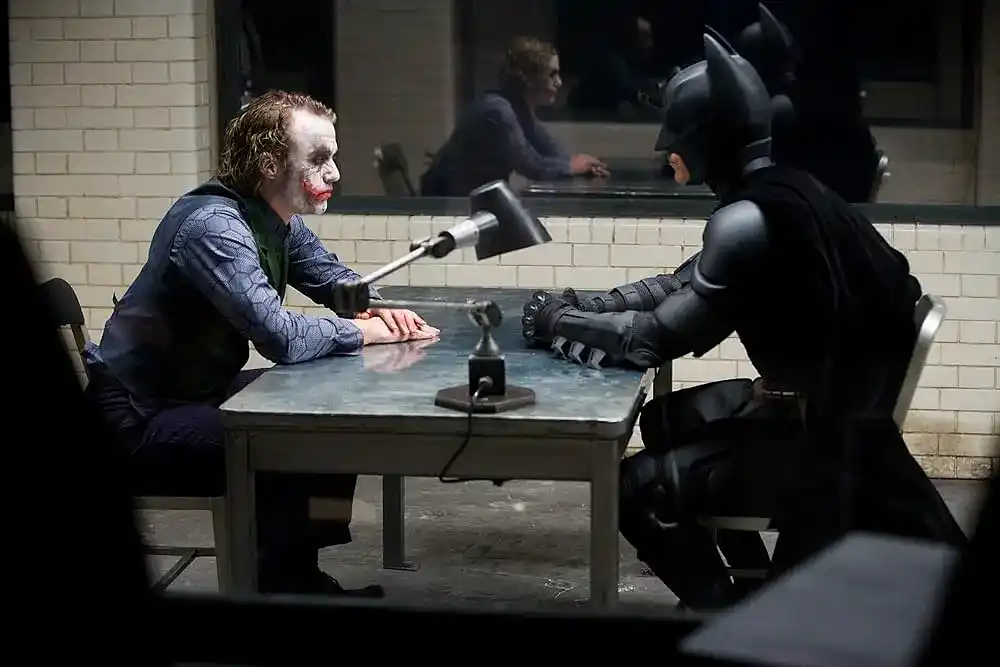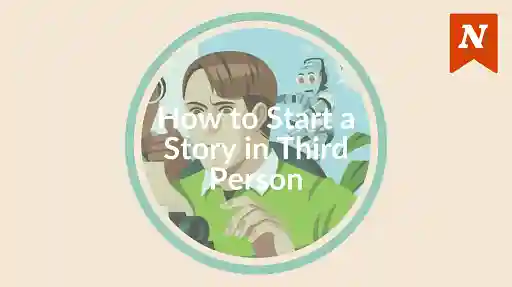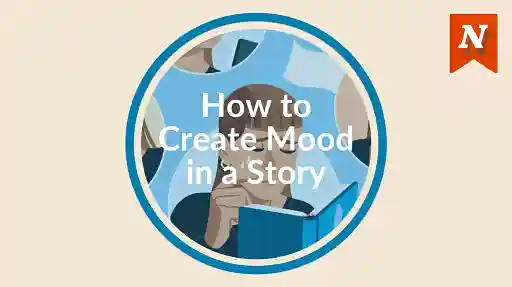Writing a sequel seems like it should be straightforward — you’ve already established your world, setting, and characters, so you should be able to skip all the exposition and jump straight into the meat of your narrative, right?
Unfortunately, not quite. Sequels come with their own set of challenges that make them uniquely difficult to write. But worry not — we’ll run you through everything you need to know to write a rock-solid sequel, and a few of the most common pitfalls to avoid.
Does your story need a sequel?
If you envisioned the original as a standalone story, odds are you resolved every major plot thread and character arc that you set up in the first book. Now, that doesn’t necessarily mean the door to writing a sequel is fully closed, but it does mean that you need to carefully consider the story you’re planning to tell if you want to open it again.
The stakes for sequel-writing are high. You’re not working with a blank canvas anymore — instead, you have an entire story’s worth of worldbuilding, characterization, and plot threads that need to be respected. If the original had a definitive ending, and you don’t have a solid idea for a continuation, then it’s probably best to close the book on a potential sequel; otherwise you risk poor execution that may damage the original story.
But if you do have a strong idea — or if you always felt, in the back of your mind, that the first story could use a sequel — then consider this the green light to proceed.
Plan, plan, plan
Unfortunately for all the pantsers out there, writing a successful sequel typically requires a lot of dedicated planning. If you didn’t write the original with a follow-up in mind, you’ll need a firm grasp on where you want to take your narrative and characters, as well as a rough outline of your major plot points to ensure you maintain continuity.
The most cohesive sequels usually have the broader story arcs mapped out from the beginning, but don’t worry if you’re planning your sequel retroactively — plenty of successful franchises, like Earthsea and the Bridget Jones series, started out as standalone stories!
Return to your first book for inspiration
Start by rereading your soon-to-be first installment, and note down any elements that seem ripe for further development. Perhaps you left some juicy character dynamics on the table, or there’s a previously minor plot point you could be expand upon. Next, consider how each of these elements could evolve in ways that will leave readers both surprised and satisfied.
Throughout the planning process, you might realize that this sequel… could have yet another sequel! If you think your book has series potential, take a step back and sketch out the bigger picture:
- How will each major character arc culminate?
- Which additional themes could you address?
- What’s the “grand conclusion” that you’re building towards?
Keep these questions in mind as you write, and you'll find yourself naturally planting seeds for future books. You don’t need to have every minor detail planned out, but knowing the general direction you‘re heading will give you the ability to organically expand your world.
Keep what worked, but avoid repetition
Balancing a new creative direction with the weight of reader expectations is one of the greatest challenges of writing a sequel. Readers want to be reimmersed in the world, characters, and story that they originally fell in love with — but they also want new twists, fresh conflicts, and organic character growth.
One of the most common sequel pitfalls is rehashing the plot of the first book by introducing an all-too-familiar villain or quest for their heroes to conquer. Stop us if you’ve heard this before: a ragtag group of scientists and adventurers travel to a remote island filled with genetically engineered dinosaurs, only to find themselves fighting for survival when chaos inevitably breaks loose. Your mind probably jumped to Stepehn Spielberg’s classic Jurassic Park, and you’d be correct — but that description also matches its oft-maligned sequel Jurassic World.

To avoid your own Jurassic World scenario, consider the key elements other than plot that made your original book a success. Maybe it was the witty back-and-forth between your main characters, or the foreboding atmosphere of your carefully-constructed cyberpunk dystopia — whatever it was that readers resonated with most, lean into it!
This might mean delving deeper into your world’s lore, exploring previously mentioned but unvisited locations, or giving a beloved side character some long-awaited development. Speaking of which…
Expand meaningfully on established characters
Have you ever found yourself witnessing the slow decline of a long-running TV show? The episodes are getting inconsistent and sloppy, yet you keep tuning in anyway. Why? Nine times out of ten, it’s because you care about the characters.
Now, that isn’t to say you should rely solely on the strength of your characters and write your sequel like a late-stage sitcom — it simply demonstrates the power of consistent characterization. As long as readers remain invested in your characters’ journeys, they can look past a minor plot contrivance here and there; if you’re writing a sequel to a book you originally envisioned as a standalone, nailing your character work will go a long way in making your sequel feel like a natural extension of the original.
To help keep your characterization in check, consider creating a character bible for each of the major players in your story. This is a detailed record filled with everything there is to know about a character, from their personality to their desires to their relationships. A character bible can help you maintain continuity and keep track of the minor details that humanize your cast! If a character prefers their coffee black with two sugars, add a note to their file — when they're offered another cup, dedicated readers will feel rewarded for remembering how that character likes it brewed.
Free Character Profile Template
A story is only as strong as its characters. Fill this out to develop yours.
Of course, making sure your characters feel familiar shouldn't come at the cost of additional character development; your cast’s experiences in the first book should act as the basis for their development in the sequel. If a character had a near-death experience in Book 1, use Book 2 to delve into the long-term effects it had on their psyche. Explore new character conflicts and shifting relationship dynamics — maybe former foes must unite to take down a shared enemy, or once-close friends drift apart due to diverging priorities.
👾 Character evolution in Ender’s Game
The titular protagonist from Ender’s Game is a great example of this in action. (Spoilers ahead for the ending!)
In the first book, Ender is manipulated into leading what he believes is a simulated battle — only to discover he has unknowingly orchestrated the genocide of an entire alien species. In the sequel, Speaker for the Dead, Ender carries immense guilt for his actions in the war and is searching for redemption. When Ender arrives on a new planet with another sentient alien species, it is up to him to navigate human-alien tensions to ensure that history does not repeat itself.

Asa Butterfield as Ender in Ender’s Game (2013). Image: Lionsgate
Maintain worldbuilding consistency
Your characters aren’t the only important elements from your first book you need to be careful with — you also need to be mindful of your worldbuilding. Before you dive into writing your sequel, brush up on all the rules and lore that you set up in the original. If there’s a hole in your magic system or a discrepancy in your world's history or geography, rest assured that eagle-eyed readers will notice, and they won’t be impressed.
You might consider keeping a whole “series bible” to help you maintain consistency and avoid any haphazard retcons. Similar to the character bibles we touched on earlier, a series bible is a reference document full of any and all vital information about your fictional world.
J.R.R. Tolkien was famous for this meticulous approach to worldbuilding: creating comprehensive appendices, language guides, and detailed historical timelines for Middle-earth that, if you can believe it, went far more in depth than what was presented to readers in The Lord of the Rings series.
The Lord of the Rings might follow the story of a single protagonist, but that isn’t the only way to write a sequel. You could take a page out of the late-great Terry Pratchett’s playbook, and set your sequel in an entirely different part of the world, following an entirely different protagonist. Pratchett jumps between different protagonists and locations throughout his beloved Discworld series, which allows him to expand his world and characters in a way that feels natural, all while maintaining the sharply satirical tone that his readers know and love.
Raise the stakes (without going overboard)
Another classic issue that a lot of sequel-writers run into is the “apocalypse problem”: in an effort to up the ante in the second installment, an even bigger, utterly norm-shattering threat is introduced. This might sound like a great idea, but it doesn’t always translate to more compelling stakes.
Tension doesn’t come from danger alone. Instead, it’s how the conflict affects your characters that’s important. A well crafted will-they-won’t-they in a heart-racing romance will be infinitely more dramatic than a nonplussed hero casually foiling a supervillain’s world-ending scheme; in the former, the protagonists are at real risk of losing something important, while in the latter, the hero has no real skin in the game.
That isn’t to say you shouldn’t introduce an apocalyptic threat, if that makes sense for your story — just ensure that the conflict escalates in a way that feels realistic and personal to your protagonist, regardless of scale.
🦇 Raising the stakes done right: The Dark Knight
On paper, the stakes in The Dark Knight are the same as in Batman Begins (both feature a plot to destroy Gotham), but the sequel ups the ante by taking the conflict in a much more psychological direction.
This time, it isn’t Batman’s physical strength that’s being challenged — it’s his ideals. The Joker is out to prove that chaos and corruption are inevitable, so he stages a series of increasingly personal attacks to goad Batman into breaking his moral code. Bruce isn’t just fighting to defeat the new villain of the week; he’s forced to question whether his presence as Batman is doing more harm than good. By keeping the story tightly focused on how these escalating obstacles affect the characters emotionally, The Dark Knight makes the danger deeper, not just bigger.

The Bat and the Clown. Image: Warner Bros
🌀 Missing the mark: Insurgent
Divergent follows the deeply personal struggle of Tris: a young woman navigating a society that punishes anyone that doesn’t conform to its systems. Tris’s story is about more than just survival — it’s about grappling with her identity, and questioning where she belongs in a world that doesn’t seem to have a place for her.
Unfortunately, Tris’ internal dilemma takes a backseat in the sequel, Insurgent. Here, the narrative inflates the conflict by introducing a mysterious box that supposedly contains a world-altering message, which only a so-called “true Divergent” can open. The plot leans too hard into a world-shattering mystery that feels detached from Tris’ own character journey from the first book; the stakes might be bigger, but they’re not better.
Mistakes to avoid when writing a sequel
The apocalypse problem is far from the only trap that eager sequel-writers can fall into. Now that we’ve covered the “dos” of sequel-writing, let’s get into a few more of the “don’ts”.
🙉 Mistake #1: not listening to reader feedback
Reader feedback can be tricky to manage. You shouldn’t let every opinion derail your creative vision — but identifying consistent points of criticism will help you recognize the strengths and weaknesses in your storytelling. Your most dedicated readers have invested significant time and emotion into your first book, so their insights are worth acknowledging while you plan your follow up.
Read reviews, book club discussions, and social media comments to determine what did and didn’t resonate with your readers. Keep that feedback in mind as you write — once you’ve finished your first draft, consider bringing a group of beta readers on board to get some fresh perspective before your final revisions. Getting this feedback will help ensure your sequel strikes the right balance between preservation and innovation.
⏪ Mistake #2: excessive recapping
Including some sort of recap in your first few chapters is an essential component of any sequel — it might have been a while since your readers last picked up the original, so they may have forgotten a few details. That being said, try to seamlessly weave your recap into your prose through natural dialogue or a character’s internal thoughts. Take care to avoid overwhelming readers with any long, overly-detailed info-dumps.
In the Percy Jackson series, author Rick Riordan opens each book with a brief narration from Percy that covers the events of the previous book in a casual, self-deprecating tone. Not only does this remind them of the previous book’s events, it also reintroduces readers to Percy’s signature brand of sarcasm that made him such a beloved character to begin with.
🙋 Mistake #3: character overload
They say “the more the merrier”, but beware the dangers of getting too merry. For a reader, one of the most exciting things about a highly anticipated sequel is getting the chance to spend more time with their favorite characters from the first book. Introducing too many fresh faces all at once can dilute this experience and leave readers feeling disconnected from the story they initially fell in love with.
Now, that isn’t to say you shouldn’t introduce any new characters in the early chapters. But remember that you can only balance so many character arcs at once — each new addition to your cast will require screen time and further emotional investment from readers. Of course, if you’re taking the previously discussed Discworld approach to your series (i.e. the sequel follows an entirely different group of characters), then feel free disregard this point — just make sure your new cast is as charming as the first in their own unique ways.
While there are no hard-and-fast rules to sequel-writing, these tips should set you on the path to creating a scintillating sequel of your own. Now, get out there and pen a knockout follow-up that your readers can’t help but fall for.










